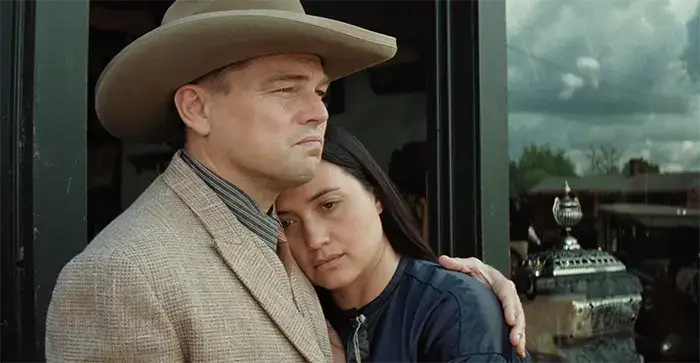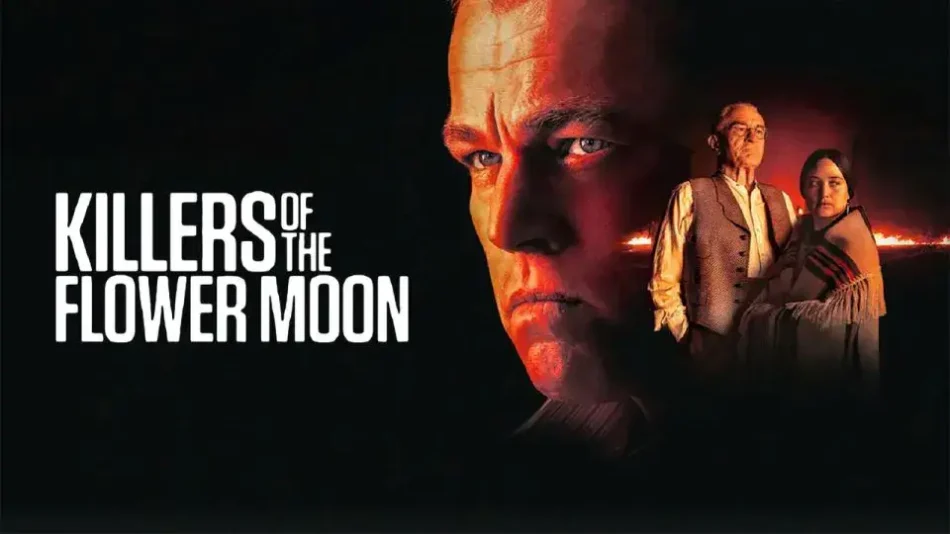(may contain spoilers)
Douban rating: 7.2
Director: Martin Scorsese
Starring: Leonardo DiCaprio, Robert De Niro, Lily Gladstone
Douban Comments: “I was excited to watch the latest film by Martin Scorsese, the famous American director who is 81 years old. The movie is nearly three and a half hours long, but every minute is well-used. I really enjoyed it!
I learned that the film is based on a novel and is told from the perspective of a son-in-law, which helps to focus on human nature and emotions. The powerful performances by Robert De Niro and Leonardo DiCaprio are the highlights of the film.”
“I watched an early IMAX screening, and unfortunately, this is the worst Martin Scorsese film I’ve seen, with the main issues being his adapted screenplay. The best way to approach this story should have been through multiple perspectives, focusing on the female lead, the uncle, and the agent. While DiCaprio’s character is central to the narrative, he should have been more of a supporting role.
DiCaprio’s character is made the main focus, which causes the Native American elements to almost disappear once the female lead exits in the latter half. The antagonist, already obvious, is revealed too early, draining much of the story’s tension. By the third act, the drama is reduced to a bunch of confused old white men just going through the motions.
If DiCaprio’s acting had been strong enough to carry the three-and-a-half-hour runtime, it might have masked some of the script’s flaws. But, unfortunately, his portrayal of a ‘rich man’s clueless son’ seems to consist only of one expression—pouting and frowning—leaving the audience stuck enduring it for a long time.”

“The entire 200-minute film is honestly quite dull. To ensure that American white audiences remember the historical wrongs, the film chose to focus on DiCaprio’s character, Mollie’s husband, instead of the FBI detective played by Jesse Plemons. However, it seems that when it comes to depicting the suffering of Native Americans and the crimes of white people, Scorsese struggles to do it justice. He ends up simplifying the portrayal of the villains.
The true horror of the story isn’t just about how evil the uncle is or how foolish the nephew is, but rather the fact that in 1920s Oklahoma, nearly all the white people participated in the murders of the Osage Nation. All the white investigators who tried to help were also killed. The number of victims wasn’t just in the dozens but exceeded a hundred.
This film might have been better suited for a young director from A24, turning it into a different kind of horror film. Of course, American filmmakers are hesitant to tackle Native American stories in such a bold way, so they stick to a more conventional and straightforward approach. Scorsese didn’t quite capture the terrifying and absurd reality of the true story.”
“3.5 stars. It’s hard to know what the film would’ve looked like had it stuck to the original concept of a detective story from the FBI’s point of view. But centering it around the husband/killer ends up sidelining the Osage people entirely and makes the narrative feel overly subdued. Both DiCaprio’s and Lily Gladstone’s characters are largely passive, so their emotional dynamic doesn’t really take off until the third act, when Scorsese returns to his familiar theme of spiritual torment. The central murder plot and the underlying racial conflict are handled in a very conventional way. What’s actually more engaging are the interludes: the silent film homage, the home movies, the newsreel footage, and especially the radio show ending – all of which invite deeper reflection on how media shapes and presents history.”








